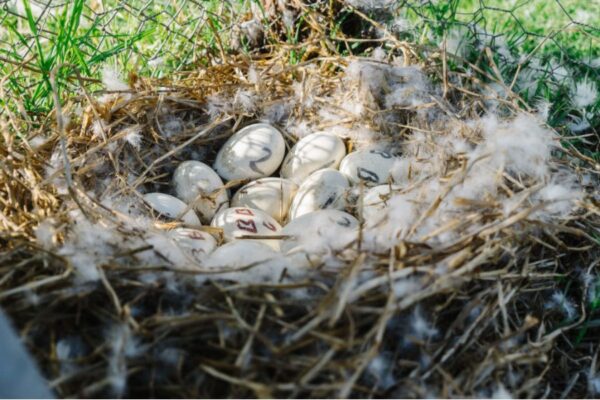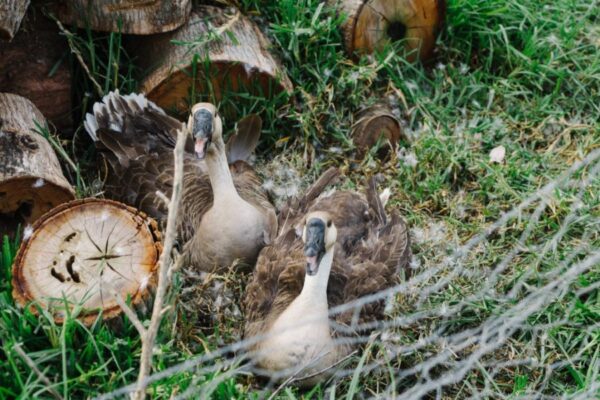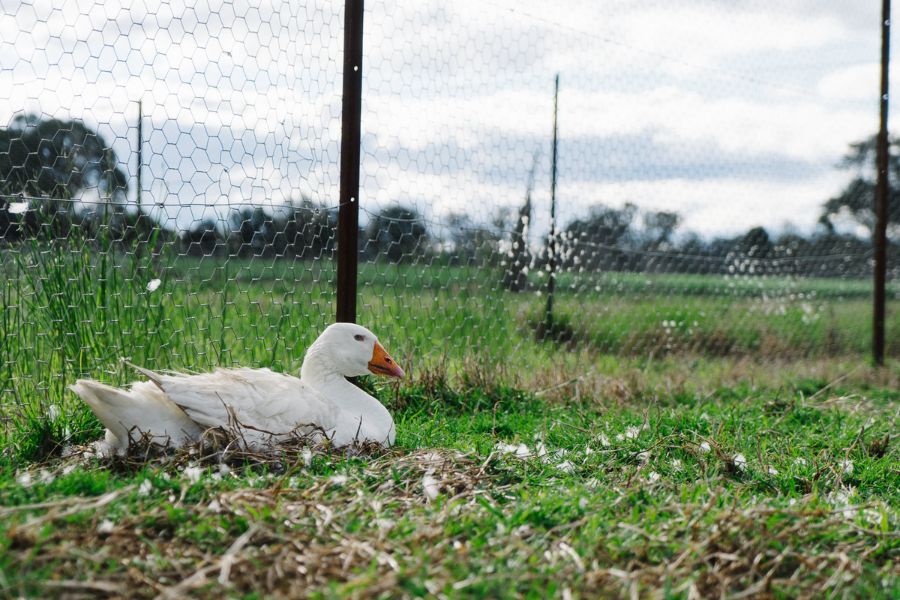Geese
6 Things about nesting geese you may not have known!
The initial 20 seconds of your gosling’s existence could be crucial.
Have you been informed that when geese lay their eggs, a protective coating is applied to shield them from any harmful bacteria? This coating takes approximately 20 seconds (or more depending on the temperature) to dry after the egg is laid. Hence, if there isn’t a clean and dry nest for the egg to be laid in, there is a higher risk of it absorbing substances that may harm the embryo. Make sure to provide fresh hay, straw, or shavings in a clean, dry area to ensure their safety.
Moreover, once your bird becomes broody, check your eggs after seven days to determine if they are fertile and remove any that are infertile. Afterward, continue to check the eggs every seven days to ensure no goslings have perished in the egg or that any eggs have turned rotten. Since goslings breathe through the egg, if a rotten egg explodes near healthy eggs, the toxins from it can be absorbed and lead to the death of the unborn gosling.
Why are my geese shedding weight?
Due to remaining on the nest most of the time once she becomes broody (approximately 28-35 days), your goose will be on a restricted diet, resulting in weight gain in preparation for laying eggs. Her body will store all the necessary nutrients for producing high-quality eggs, making her appear in peak condition, much like a radiant pregnant woman.
Once your geese turn broody, you may observe them losing weight rapidly. This change is because they spend an extended period on the nest, reducing the time spent eating. This natural process helps lighten them up for when their goslings hatch, making it easier for them to move around the nest without risking crushing their goslings or eggs. This weight loss is also observable in the ganders due to the time they spend protecting the nest.
My geese aren’t laying… or are they?
Geese typically lay eggs every other day, especially the exhibition birds. They lay the eggs, create a cozy nest, and conceal the eggs to prevent crows and predators from locating them. You might mistakenly think that your geese aren’t laying eggs when, under a layer of nesting material, there could be 7-8 eggs hidden. Therefore, make sure to regularly check your goose’s nest to confirm their laying activity.
Bonus Mick’s Advice: Avoid overloading the nest with eggs. A well-built nest can accommodate up to 10 eggs. You might push it to 15 if it’s exceptionally sturdy, but having too many eggs in the nest puts those on the edges at higher risk of rolling out or improper incubation.

How can I recognize the signs indicating my geese are preparing to lay?
You’ll observe an increase in mating behavior in your geese leading up to laying. Some other indications include…
They will begin to scavenge around bushes and secluded areas – behind a shed or a bush – away from the usual yard commotion.
Another sign is their collection of various materials from the ground that could be useful for their nest. They will toss these materials in the direction of their chosen nesting spot (refer to the video below). You can assist by scattering grass or straw around, providing them ample material to construct their nests. This activity is not exclusive to the female goose as her gander may also participate. Sometimes, they continue these actions even when far from the nest.
If you’re offering a shelter for her to lay in, it’s crucial to introduce it before she begins laying to ensure familiarity. Gradually move it closer to the nest daily, covering it over the nest in 3 to 5 days. Avoid placing it directly over the nest, as this might startle the goose and prompt her to relocate her eggs.
What an intelligent goose!
Were you aware that geese tend to conceal their tracks to safeguard their nests from predators? In the wild, geese typically fly in and out of the nest to avoid leaving a scent trail. Additionally, during flight, they often relieve themselves to prevent leaving strong odors around the nest area.
In captivity, especially for heavier goose breeds that may not fly frequently, when geese nest in a larger area and move away from the nest to eat or defecate, they will usually take different routes back to the nest. They may zigzag or take an extra lap around the yard to prevent leaving a clear scent path back to the nest. By spreading their scent everywhere, they make it challenging for predators like foxes to locate the nest.

Take a stroll, you idle goose
Expanding on the previous point – Avoid placing food and water near your goose’s nest as this could jeopardize the safety of their unborn goslings.
There are several reasons for this… Broody geese often implement a self-imposed diet and shed weight to facilitate easier movement within the nest without crushing the eggs (as previously mentioned). Having food and water in close proximity during nesting can attract other fowl in your vicinity, potentially disturbing the eggs. Additionally, it may draw rodents that carry diseases and leave droppings, putting the goslings at risk. The presence of rodent scents in the nest area could also attract larger predators like snakes, birds of prey, and foxes.
Placing food farther from the nest offers benefits such as… prevention of the above issues and allows the goose a chance to move, exercise, flap their wings, and relieve themselves away from the nest. This two-day sitting period can lead to a healthier, happier bird and a cleaner nesting environment.

